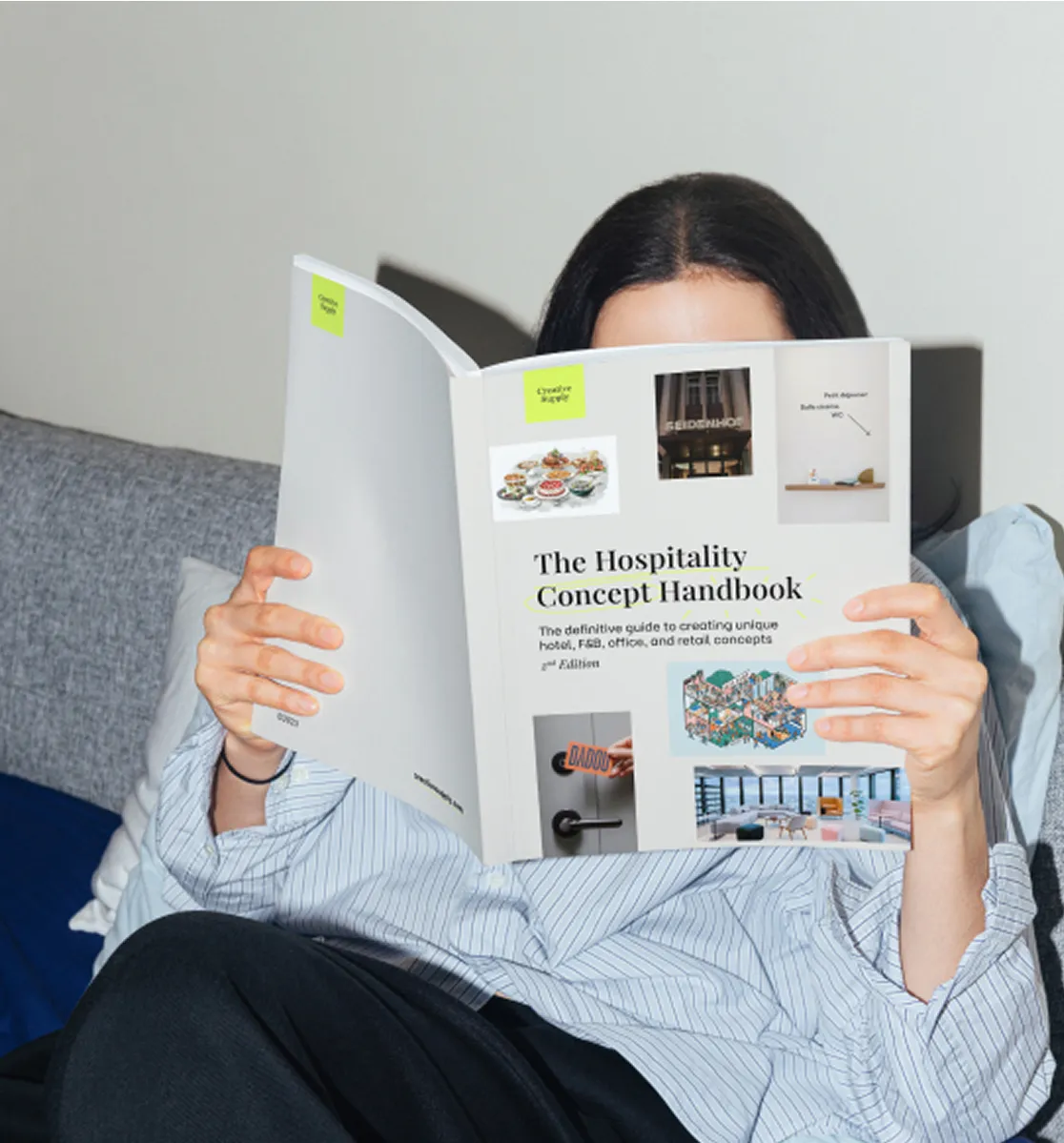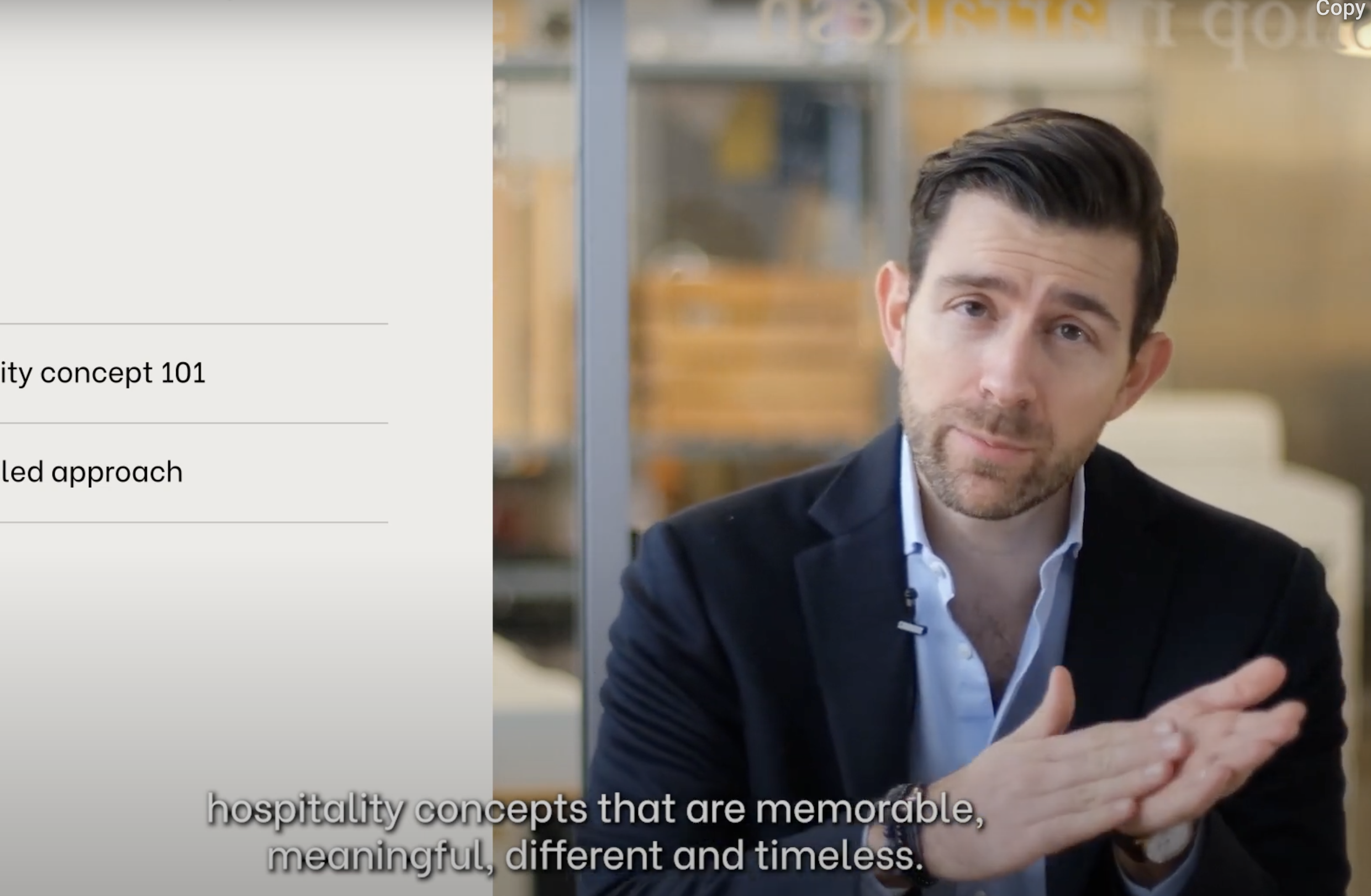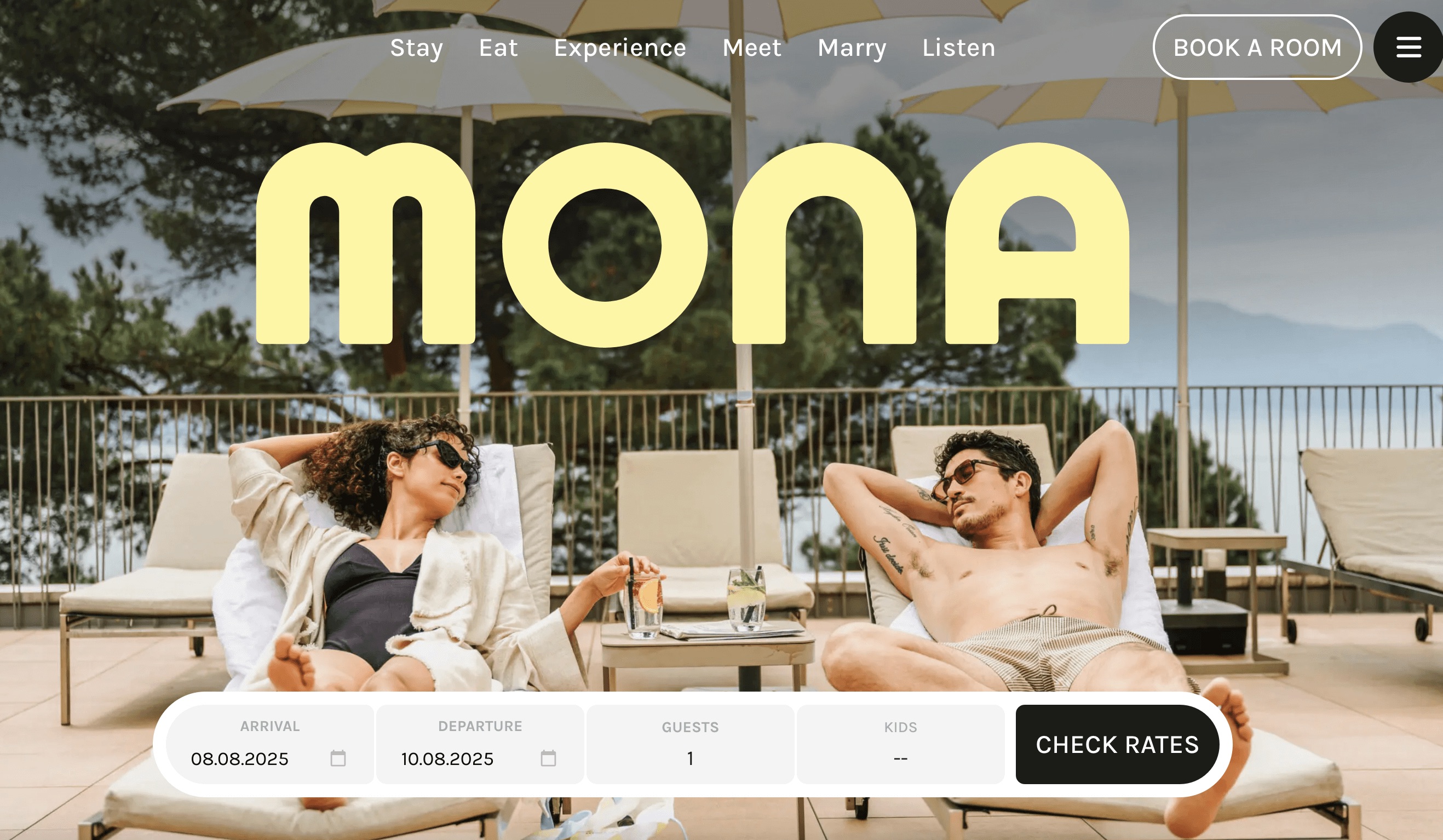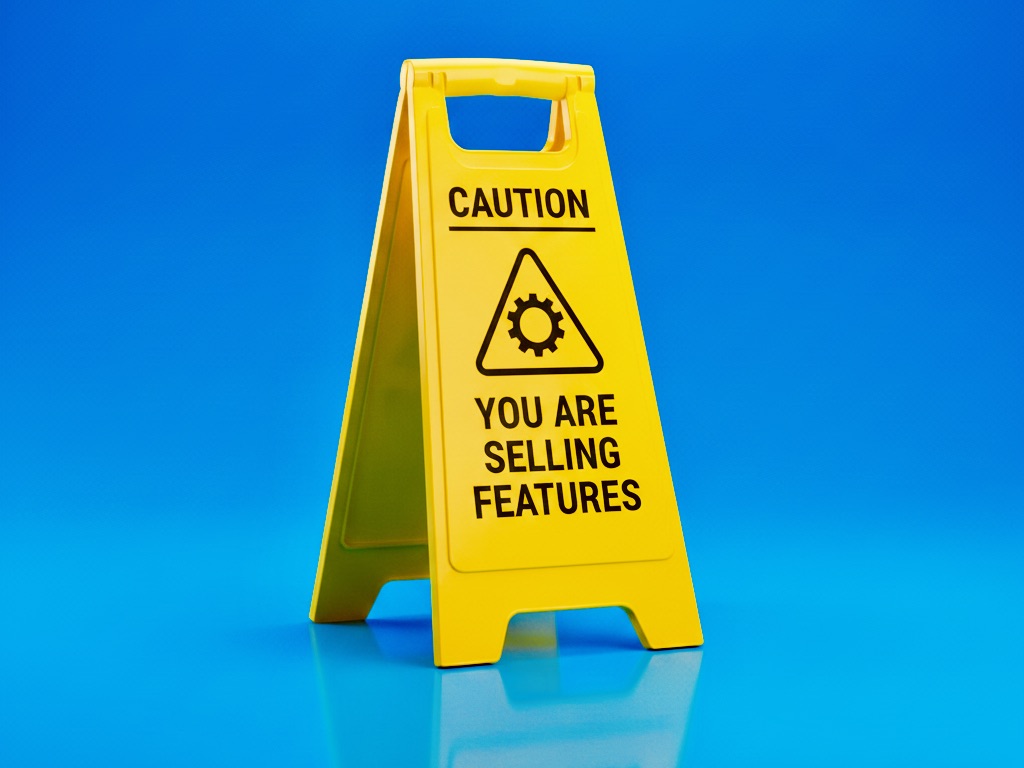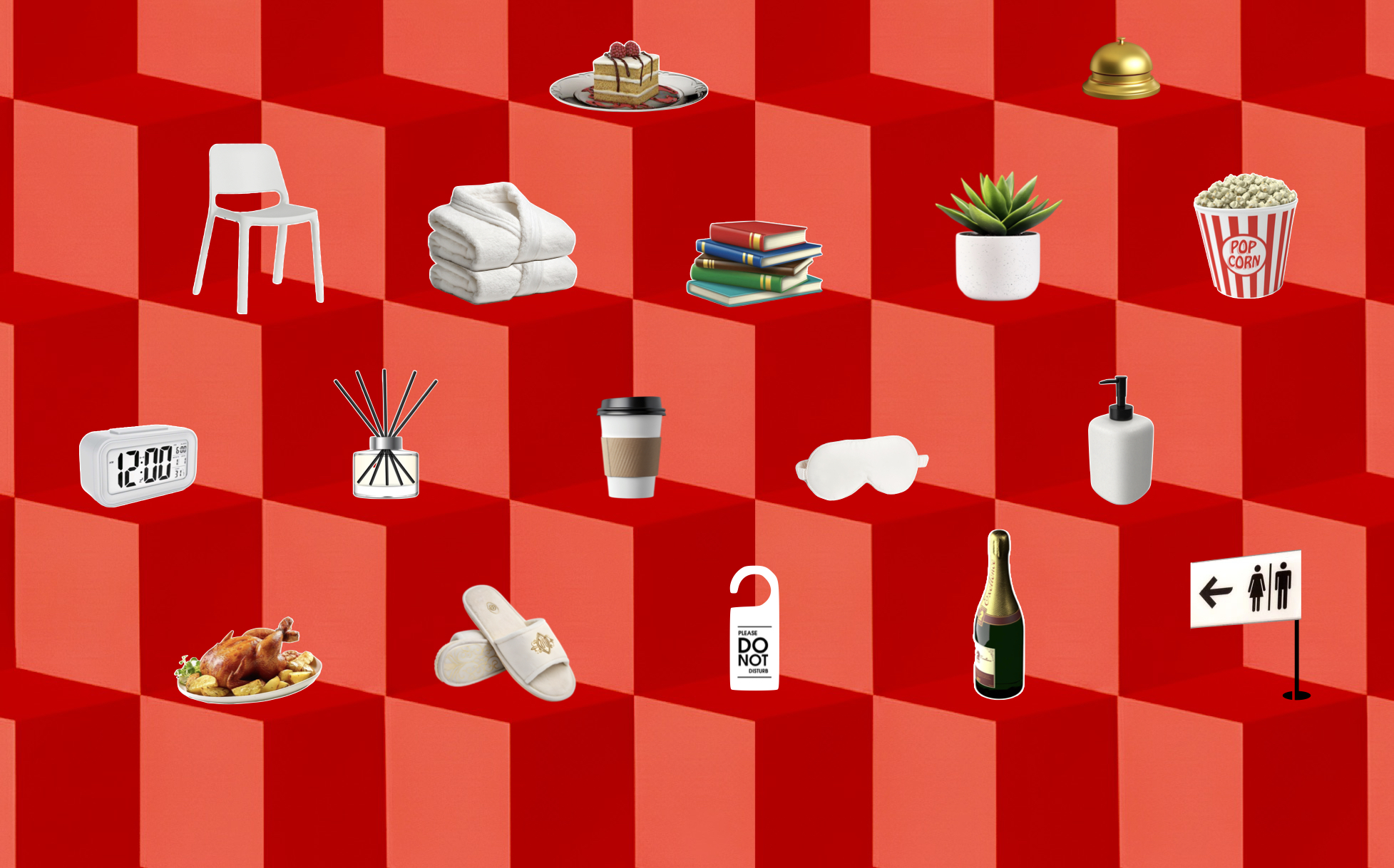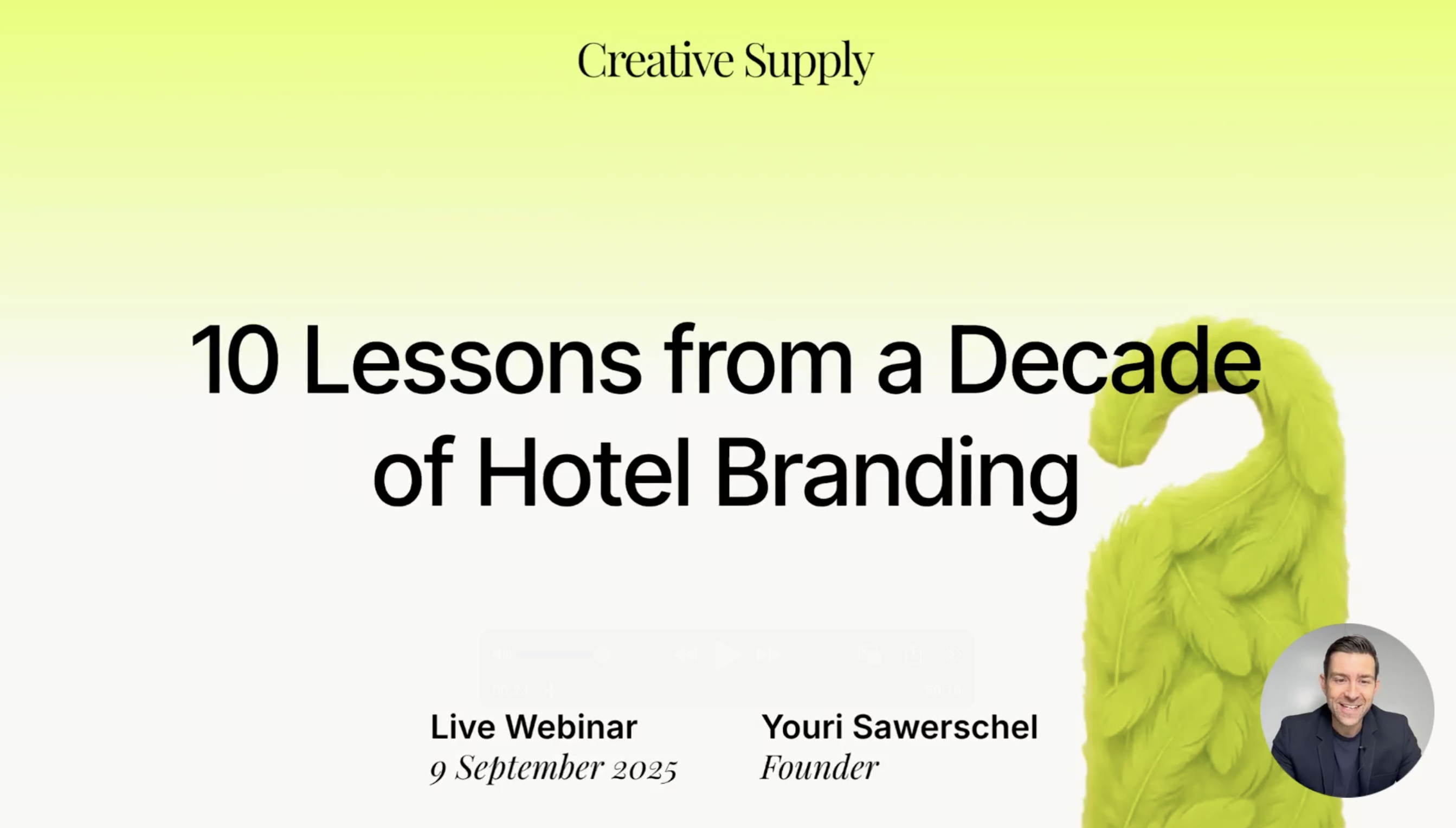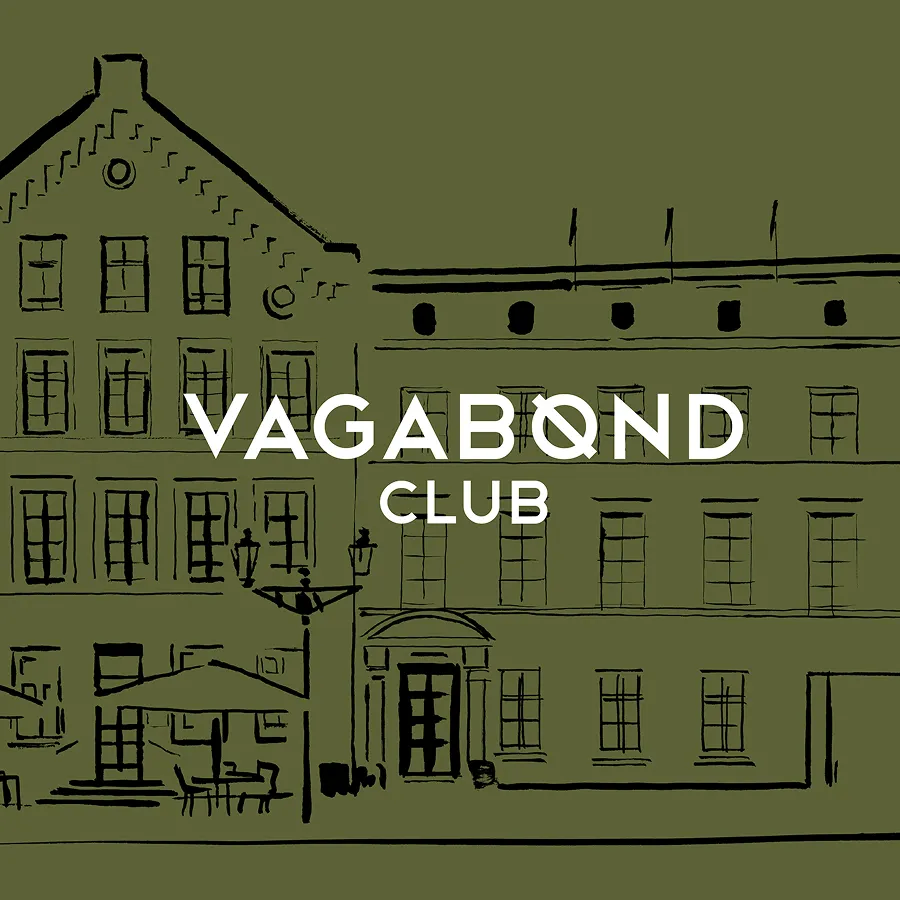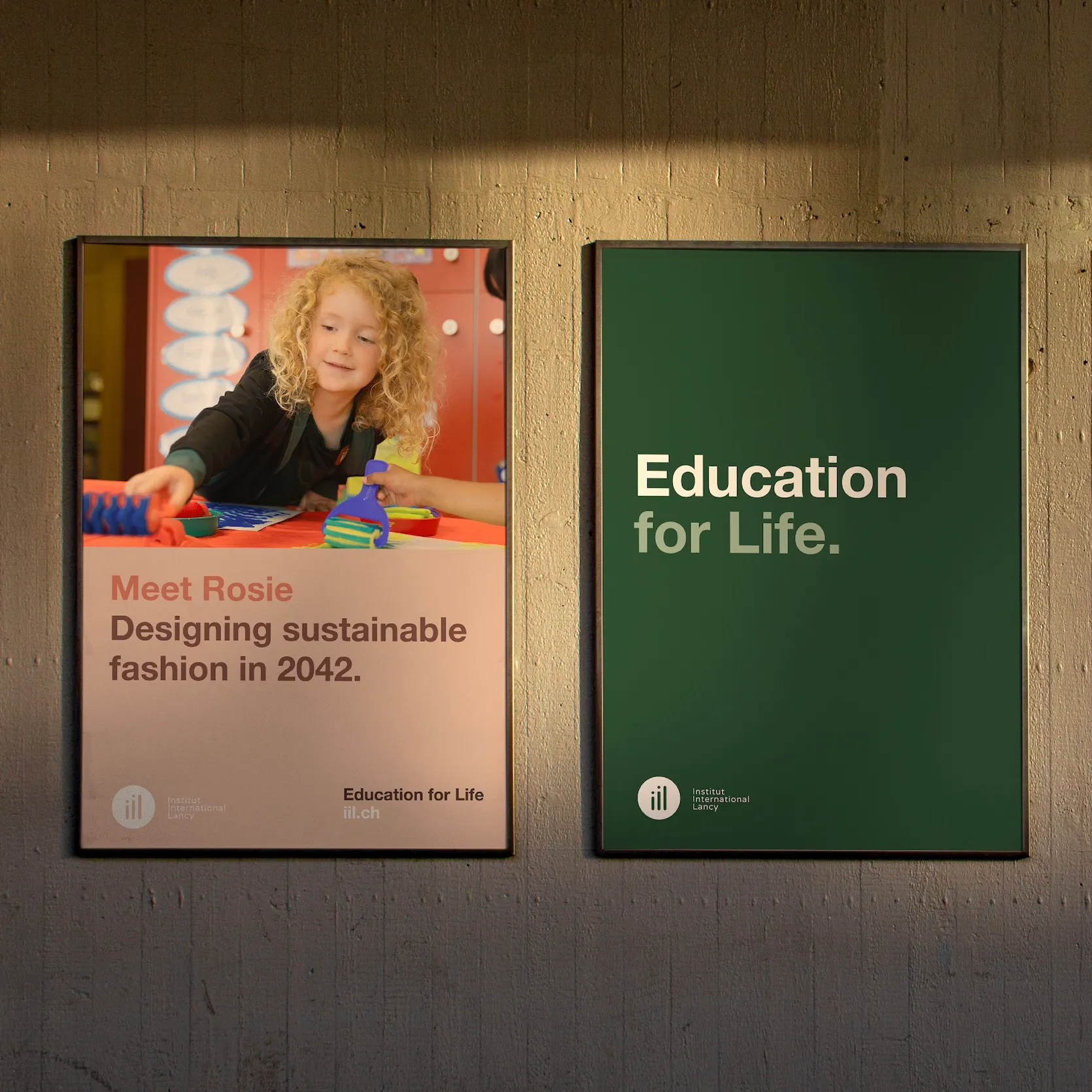10 Lessons from a Decade of Hotel Branding
Since 2015, we’ve been involved in hundreds of hospitality branding projects, creating and launching hotel brands across the globe — from a heritage hotel in Paris to countryside resorts in Georgia. Here are our top 10 hotel branding learnings.
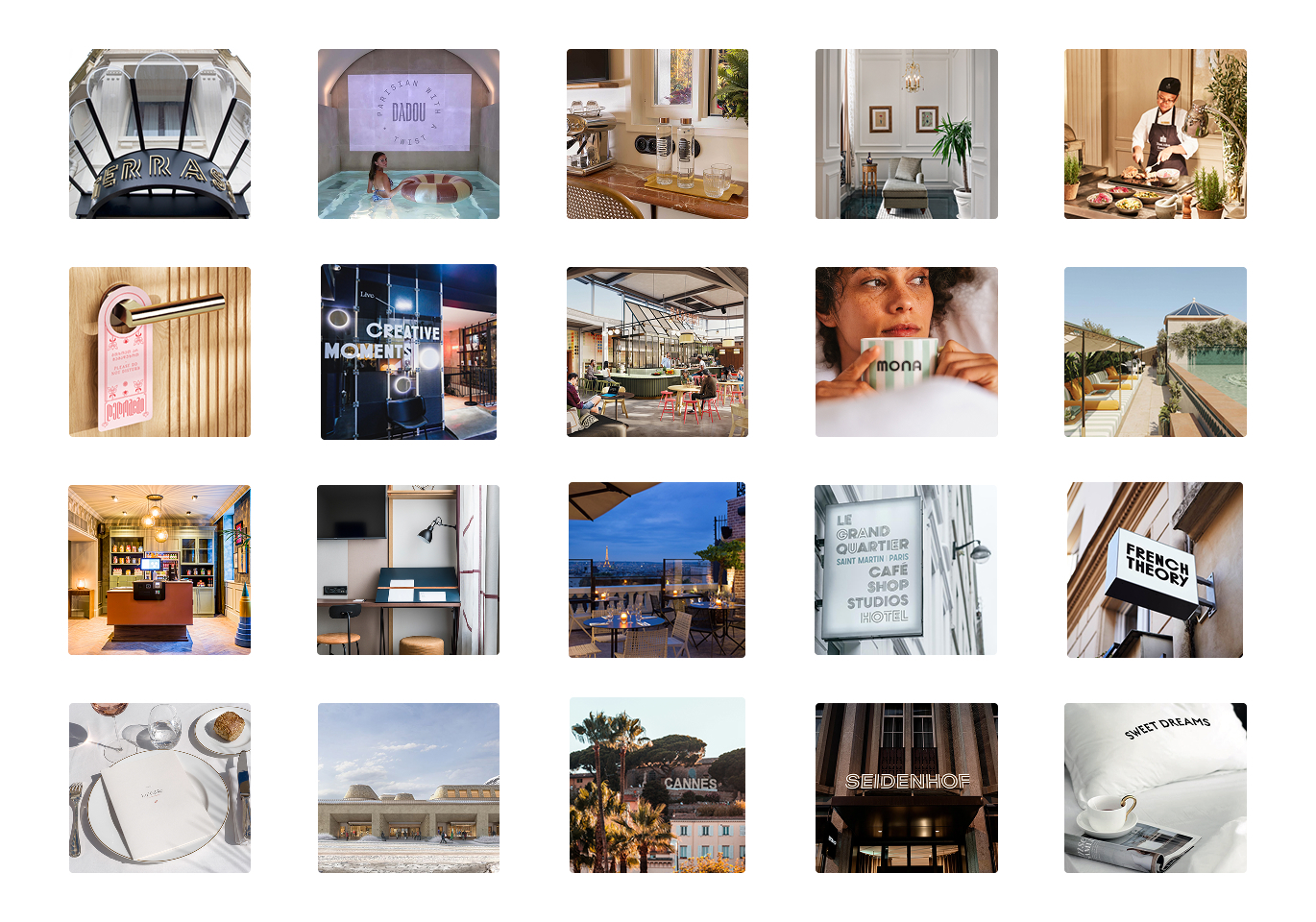
1. Destination Dynamics Are Unavoidable
Every city, neighbourhood, and sometimes even a single street, has its own dynamics: guest profiles, seasonality, and competition. When developing a hotel brand concept, location dictates what’s possible. Straying too far from what guests expect of a destination significantly increases the risk of failure. Sure, the “build it and they will come” approach worked for the first Mama Shelter or the Burj Al Arab — but those are the exceptions, not the rule.
2. A Hotel Needs a Story Rooted in Novelty, Zeitgeist, or Heritage
To capture attention, especially from the media, your hotel needs a story that goes beyond brick and mortar. A strong story gives soul to your hotel by revealing the intention behind the brand. A compelling narrative helps your hotel be remembered, talked about, and written about. For our first ever project in Paris, the Terrass" Hôtel, we crafted a heritage-based narrative, showing how the hotel was contemporary with Renoir and Edith Piaf. That story — positioning the hotel as "the artists’ address since 1911" — got the press talking.
3. Originality Pays Off
Everyone wants to stand out, yet nobody wants to be alone. That paradox is at the heart of branding decisions: do we dare to be different, or play it safe with “proven” ideas? Over the years, we’ve seen that original brand positionings are very well received by guests. What the hotel team might see as “too bold” often comes across as “fresh” to guests. We experienced this first-hand with Nuage and French Theory, two Parisian hotel concepts that broke the conventions of the classic boutique hôtel parisien.
4. Interior Design Doesn’t Make a Hospitality Concept
Many owners and managers start with interior design when developing a concept. But a hotel brand won’t stand out long-term if it relies only on aesthetics. A strong hospitality concept starts with a clear idea, not a visual moodboard. That concept should guide everything else: services, communication, commercial strategy, and even your target clientele. So, define your concept and brand first - then use it to brief the right interior designer, not the other way around.
5. The Best Ideas Are Found Offline
If you want to create something original, you need different inputs than your competitors. In other words, look for insight beyond Google and ChatGPT. Real-world research unlocks the most unexpected and relevant ideas. Get out into the street. Talk to locals. Observe: What are people eating or drinking on the go? How are shop windows and signs designed? Which spots do people stop to take photos? You get the idea. Our concept for Mona, for example, was sparked by research into the hotel’s physical archives — something you’d never find online.
6. No Owner Buy-In, No Success
The right concept for a location isn’t the “best” idea on paper — it’s the one the real estate owner likes and can deliver. Even the most brilliant concept will fail without the owner's full support and understanding. We’ve seen brilliant hotel concepts fail because the owner lacked the ambition, clarity, or confidence to see them through. For instance, a location may be perfect for a hybrid F&B-retail corner — but if the owner isn’t fully on board, the project won’t fly.
7. Retail Drives Value
When done well, retail brings multiple benefits: extra revenue, shareable content, and free advertising. But for it to work, it needs to be unique and contextual. A curated, branded retail offer becomes both a revenue stream and a marketing tool. If your retail corner sells the same items people can buy next door (for less), there’s no point. Instead, think curated objects, local finds - or branded merch like totes and caps. When well designed, these items become coveted and double as walking billboards for your hotel.
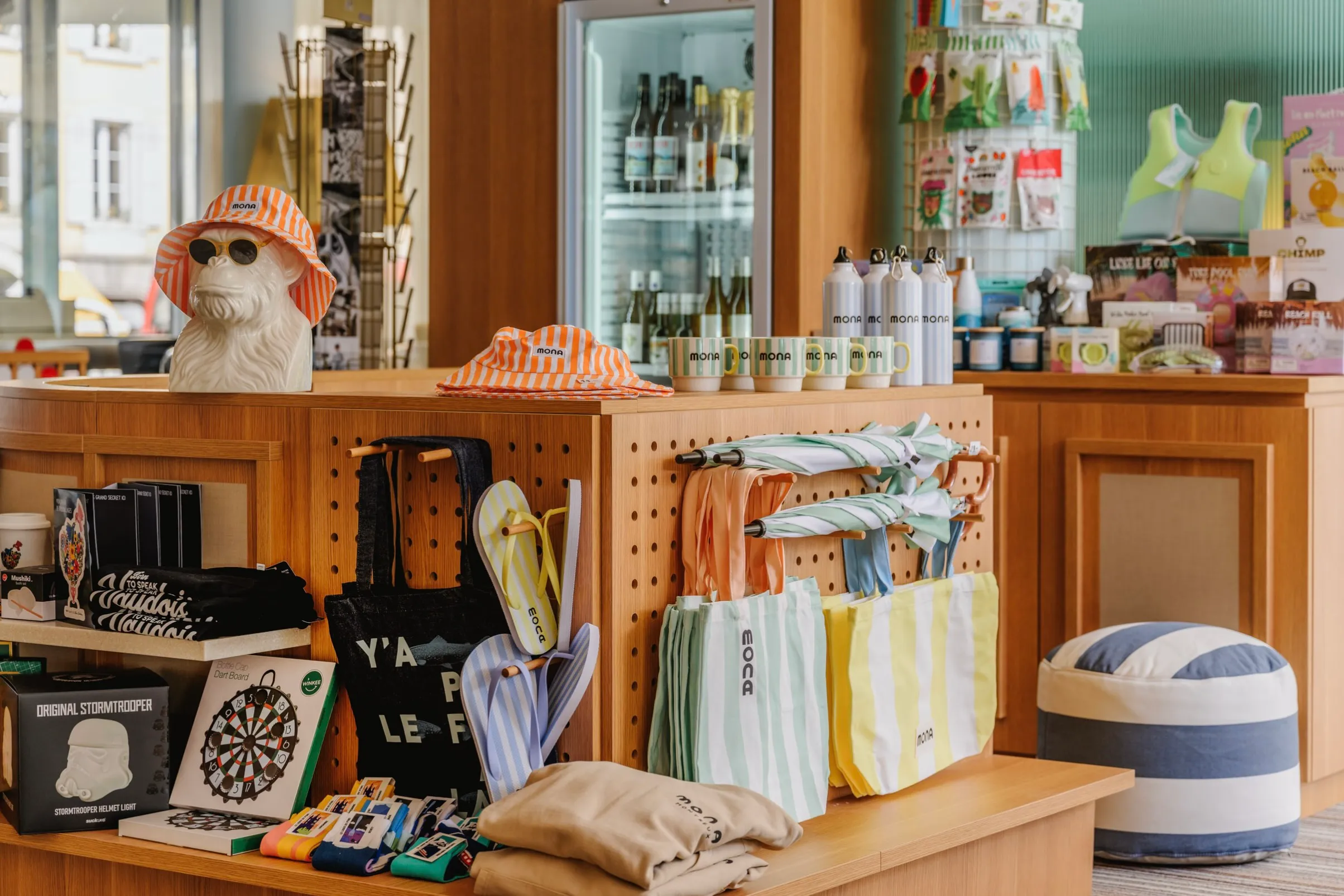
8. Photography and Video Should Never Be an Afterthought
Your guests will experience your concept online before they see it in real life. That means they’re making purchase decisions based on photos — not reality. Visual content isn’t documentation — it’s your first and most persuasive sales tool. Think like an e-commerce business. Invest in a full-scale photoshoot with a photographer, models, stylists, and make-up artists. Too often, visuals are squeezed in at the end of a project — don’t make that mistake. Plan for it. Budget for it. Prioritise it.
9. Details in Execution Make the Difference
Confirmation emails, Wi-Fi passwords, purchase receipts — these are basic touchpoints. But they don’t have to be boring. The smallest interactions often leave the most lasting impressions. A clever Wi-Fi name or a witty message in a confirmation email can give guests a moment of delight and reinforce your brand. In branding, every detail counts. And it’s the sum of these small touches that defines a guest’s lasting impression.
10. Service Staff Must Be on Board
No matter how smart your concept is, it will fail if frontline staff can’t understand or apply it. Most operational teams think in practical terms. This means abstract ideas need to be translated into real implications. If the team doesn’t get it, the concept won’t land. We once presented a concept that involved converting four guest rooms into a rooftop restaurant. A housekeeping team member asked, “So… does that mean fewer rooms to clean?” A good reminder that if your staff doesn’t get it, your guests won’t either.
Final Thoughts
These ten learnings have all been earned on the ground. Use them to shape your hotel brand into a more creative, coherent, and commercially successful one.
If you’d like to explore how we work on hotel branding projects, check out our project portfolio or download our Hospitality Concept Handbook.
Looking to Strengthen Your Hotel Brand?
At Creative Supply, we help hospitality businesses develop brand strategy, storytelling, brand design, and hospitality concepts that attract guests, stand out from competitors, and drive long-term growth.
👉 Contact us to discuss your project and start building a winning hotel brand.
10 Lessons from a Decade of Hotel Branding

1. Destination Dynamics Are Unavoidable
Every city, neighbourhood, and sometimes even a single street, has its own dynamics: guest profiles, seasonality, and competition. When developing a hotel brand concept, location dictates what’s possible. Straying too far from what guests expect of a destination significantly increases the risk of failure. Sure, the “build it and they will come” approach worked for the first Mama Shelter or the Burj Al Arab — but those are the exceptions, not the rule.
2. A Hotel Needs a Story Rooted in Novelty, Zeitgeist, or Heritage
To capture attention, especially from the media, your hotel needs a story that goes beyond brick and mortar. A strong story gives soul to your hotel by revealing the intention behind the brand. A compelling narrative helps your hotel be remembered, talked about, and written about. For our first ever project in Paris, the Terrass" Hôtel, we crafted a heritage-based narrative, showing how the hotel was contemporary with Renoir and Edith Piaf. That story — positioning the hotel as "the artists’ address since 1911" — got the press talking.
3. Originality Pays Off
Everyone wants to stand out, yet nobody wants to be alone. That paradox is at the heart of branding decisions: do we dare to be different, or play it safe with “proven” ideas? Over the years, we’ve seen that original brand positionings are very well received by guests. What the hotel team might see as “too bold” often comes across as “fresh” to guests. We experienced this first-hand with Nuage and French Theory, two Parisian hotel concepts that broke the conventions of the classic boutique hôtel parisien.
4. Interior Design Doesn’t Make a Hospitality Concept
Many owners and managers start with interior design when developing a concept. But a hotel brand won’t stand out long-term if it relies only on aesthetics. A strong hospitality concept starts with a clear idea, not a visual moodboard. That concept should guide everything else: services, communication, commercial strategy, and even your target clientele. So, define your concept and brand first - then use it to brief the right interior designer, not the other way around.
5. The Best Ideas Are Found Offline
If you want to create something original, you need different inputs than your competitors. In other words, look for insight beyond Google and ChatGPT. Real-world research unlocks the most unexpected and relevant ideas. Get out into the street. Talk to locals. Observe: What are people eating or drinking on the go? How are shop windows and signs designed? Which spots do people stop to take photos? You get the idea. Our concept for Mona, for example, was sparked by research into the hotel’s physical archives — something you’d never find online.
6. No Owner Buy-In, No Success
The right concept for a location isn’t the “best” idea on paper — it’s the one the real estate owner likes and can deliver. Even the most brilliant concept will fail without the owner's full support and understanding. We’ve seen brilliant hotel concepts fail because the owner lacked the ambition, clarity, or confidence to see them through. For instance, a location may be perfect for a hybrid F&B-retail corner — but if the owner isn’t fully on board, the project won’t fly.
7. Retail Drives Value
When done well, retail brings multiple benefits: extra revenue, shareable content, and free advertising. But for it to work, it needs to be unique and contextual. A curated, branded retail offer becomes both a revenue stream and a marketing tool. If your retail corner sells the same items people can buy next door (for less), there’s no point. Instead, think curated objects, local finds - or branded merch like totes and caps. When well designed, these items become coveted and double as walking billboards for your hotel.

8. Photography and Video Should Never Be an Afterthought
Your guests will experience your concept online before they see it in real life. That means they’re making purchase decisions based on photos — not reality. Visual content isn’t documentation — it’s your first and most persuasive sales tool. Think like an e-commerce business. Invest in a full-scale photoshoot with a photographer, models, stylists, and make-up artists. Too often, visuals are squeezed in at the end of a project — don’t make that mistake. Plan for it. Budget for it. Prioritise it.
9. Details in Execution Make the Difference
Confirmation emails, Wi-Fi passwords, purchase receipts — these are basic touchpoints. But they don’t have to be boring. The smallest interactions often leave the most lasting impressions. A clever Wi-Fi name or a witty message in a confirmation email can give guests a moment of delight and reinforce your brand. In branding, every detail counts. And it’s the sum of these small touches that defines a guest’s lasting impression.
10. Service Staff Must Be on Board
No matter how smart your concept is, it will fail if frontline staff can’t understand or apply it. Most operational teams think in practical terms. This means abstract ideas need to be translated into real implications. If the team doesn’t get it, the concept won’t land. We once presented a concept that involved converting four guest rooms into a rooftop restaurant. A housekeeping team member asked, “So… does that mean fewer rooms to clean?” A good reminder that if your staff doesn’t get it, your guests won’t either.
Final Thoughts
These ten learnings have all been earned on the ground. Use them to shape your hotel brand into a more creative, coherent, and commercially successful one.
If you’d like to explore how we work on hotel branding projects, check out our project portfolio or download our Hospitality Concept Handbook.
Looking to Strengthen Your Hotel Brand?
At Creative Supply, we help hospitality businesses develop brand strategy, storytelling, brand design, and hospitality concepts that attract guests, stand out from competitors, and drive long-term growth.
👉 Contact us to discuss your project and start building a winning hotel brand.


10 Lessons from a Decade of Hotel Branding
Since 2015, we’ve been involved in hundreds of hospitality branding projects, creating and launching hotel brands across the globe — from a heritage hotel in Paris to countryside resorts in Georgia. Here are our top 10 hotel branding learnings.
1. Destination Dynamics Are Unavoidable
Every city, neighbourhood, and sometimes even a single street, has its own dynamics: guest profiles, seasonality, and competition. When developing a hotel brand concept, location dictates what’s possible. Straying too far from what guests expect of a destination significantly increases the risk of failure. Sure, the “build it and they will come” approach worked for the first Mama Shelter or the Burj Al Arab — but those are the exceptions, not the rule.
2. A Hotel Needs a Story Rooted in Novelty, Zeitgeist, or Heritage
To capture attention, especially from the media, your hotel needs a story that goes beyond brick and mortar. A strong story gives soul to your hotel by revealing the intention behind the brand. A compelling narrative helps your hotel be remembered, talked about, and written about. For our first ever project in Paris, the Terrass" Hôtel, we crafted a heritage-based narrative, showing how the hotel was contemporary with Renoir and Edith Piaf. That story — positioning the hotel as "the artists’ address since 1911" — got the press talking.
3. Originality Pays Off
Everyone wants to stand out, yet nobody wants to be alone. That paradox is at the heart of branding decisions: do we dare to be different, or play it safe with “proven” ideas? Over the years, we’ve seen that original brand positionings are very well received by guests. What the hotel team might see as “too bold” often comes across as “fresh” to guests. We experienced this first-hand with Nuage and French Theory, two Parisian hotel concepts that broke the conventions of the classic boutique hôtel parisien.
4. Interior Design Doesn’t Make a Hospitality Concept
Many owners and managers start with interior design when developing a concept. But a hotel brand won’t stand out long-term if it relies only on aesthetics. A strong hospitality concept starts with a clear idea, not a visual moodboard. That concept should guide everything else: services, communication, commercial strategy, and even your target clientele. So, define your concept and brand first - then use it to brief the right interior designer, not the other way around.
5. The Best Ideas Are Found Offline
If you want to create something original, you need different inputs than your competitors. In other words, look for insight beyond Google and ChatGPT. Real-world research unlocks the most unexpected and relevant ideas. Get out into the street. Talk to locals. Observe: What are people eating or drinking on the go? How are shop windows and signs designed? Which spots do people stop to take photos? You get the idea. Our concept for Mona, for example, was sparked by research into the hotel’s physical archives — something you’d never find online.
6. No Owner Buy-In, No Success
The right concept for a location isn’t the “best” idea on paper — it’s the one the real estate owner likes and can deliver. Even the most brilliant concept will fail without the owner's full support and understanding. We’ve seen brilliant hotel concepts fail because the owner lacked the ambition, clarity, or confidence to see them through. For instance, a location may be perfect for a hybrid F&B-retail corner — but if the owner isn’t fully on board, the project won’t fly.
7. Retail Drives Value
When done well, retail brings multiple benefits: extra revenue, shareable content, and free advertising. But for it to work, it needs to be unique and contextual. A curated, branded retail offer becomes both a revenue stream and a marketing tool. If your retail corner sells the same items people can buy next door (for less), there’s no point. Instead, think curated objects, local finds - or branded merch like totes and caps. When well designed, these items become coveted and double as walking billboards for your hotel.

8. Photography and Video Should Never Be an Afterthought
Your guests will experience your concept online before they see it in real life. That means they’re making purchase decisions based on photos — not reality. Visual content isn’t documentation — it’s your first and most persuasive sales tool. Think like an e-commerce business. Invest in a full-scale photoshoot with a photographer, models, stylists, and make-up artists. Too often, visuals are squeezed in at the end of a project — don’t make that mistake. Plan for it. Budget for it. Prioritise it.
9. Details in Execution Make the Difference
Confirmation emails, Wi-Fi passwords, purchase receipts — these are basic touchpoints. But they don’t have to be boring. The smallest interactions often leave the most lasting impressions. A clever Wi-Fi name or a witty message in a confirmation email can give guests a moment of delight and reinforce your brand. In branding, every detail counts. And it’s the sum of these small touches that defines a guest’s lasting impression.
10. Service Staff Must Be on Board
No matter how smart your concept is, it will fail if frontline staff can’t understand or apply it. Most operational teams think in practical terms. This means abstract ideas need to be translated into real implications. If the team doesn’t get it, the concept won’t land. We once presented a concept that involved converting four guest rooms into a rooftop restaurant. A housekeeping team member asked, “So… does that mean fewer rooms to clean?” A good reminder that if your staff doesn’t get it, your guests won’t either.
Final Thoughts
These ten learnings have all been earned on the ground. Use them to shape your hotel brand into a more creative, coherent, and commercially successful one.
If you’d like to explore how we work on hotel branding projects, check out our project portfolio or download our Hospitality Concept Handbook.
Looking to Strengthen Your Hotel Brand?
At Creative Supply, we help hospitality businesses develop brand strategy, storytelling, brand design, and hospitality concepts that attract guests, stand out from competitors, and drive long-term growth.
👉 Contact us to discuss your project and start building a winning hotel brand.
